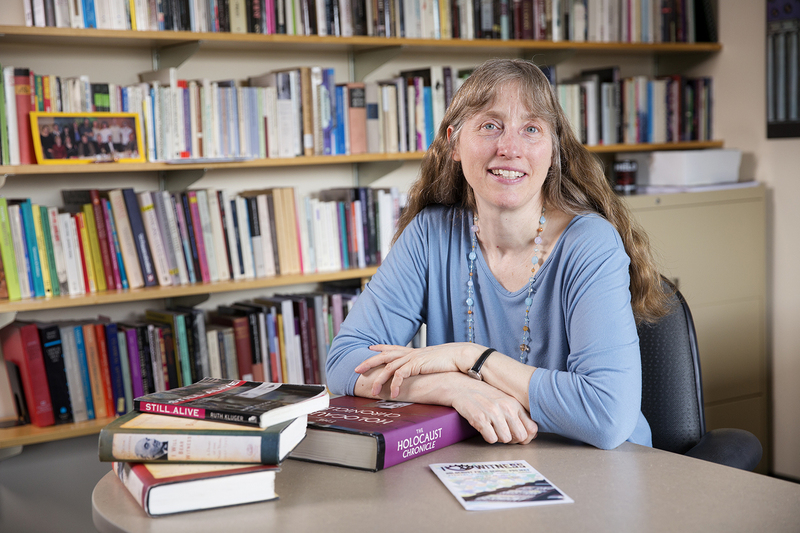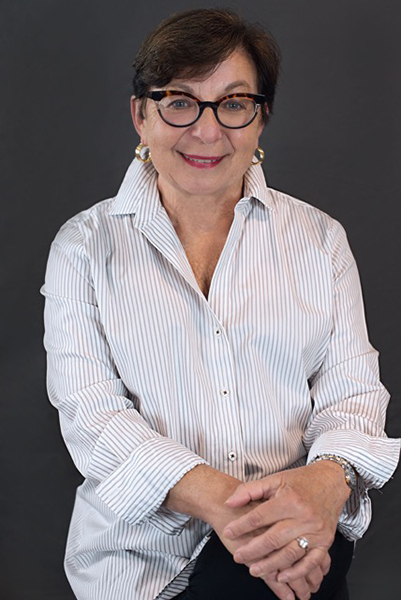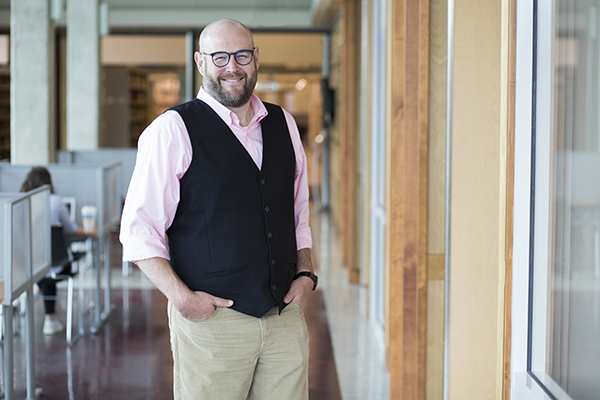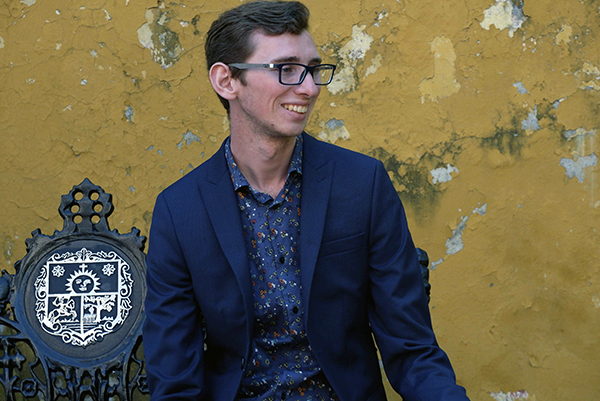About the Exhibit
Background Information
This exhibit was created as part of a course on Holocaust and Memory Studies offered through the Department of Germanic and Slavic Studies in the Faculty of Humanities at the University of Victoria. In the January – April 2021 semester, a number of upper-level undergraduate students and UVic graduate students worked together to determine how best to tell someone else’s story of the Holocaust.
Working one-on-one with community members from Victoria, Vancouver, and Saltspring Island, these students engaged in a process of active listening and storytelling in order to present diverse stories of the Holocaust in the form of an online exhibit. Stories of the Holocaust: Local Memory and Transmission centres not only on the actual stories themselves but also on notions of relationship building, storytelling and transmission, as well as memory work, intergenerational trauma, and active remembering.
In this exhibit, you will meet a famous musician, a medical doctor, the youngest prisoner on record in the Buchenwald concentration camp, a young girl who escaped from the Warsaw ghetto, another who was murdered in Auschwitz-Birkenau, a sixteen-year-old girl who hid publicly in the Netherlands, a young married couple sent to a Soviet gulag, and several others. You will read stories written by survivors, including those of Mottel Menczer composed in Yiddish; you will have the opportunity to listen to Rudolf Deman’s pre-war violin music and to view Hinda Avery’s fantastical artwork that emerged decades after the Holocaust; and you will witness various ways that the Holocaust has been—and is still being—researched and remembered by the children, grandchildren, and great grandchildren of survivors. Each of the ten stories featured in this exhibit is unique, emphasizing diverse geographical locations; focusing on different generations (e.g., child survivors, parents, grandparents, great grandparents, or other relatives); presenting myriad documents and records; and drawing together a variety of narrative threads.
Commentary by Dr. Helga Thorson
As the instructor of this Holocaust and Memory Studies course at UVic, I was able to witness the excitement that developed between the students and their community partners around the creation of the exhibit. About half of the community partners also took part in the course in another capacity: as writers and artists whose work we analyzed in our class sessions. I am extremely grateful to them for meeting with us over Zoom to discuss their novels, memoirs, poetry, and paintings. In addition, students read a variety of academic texts related to Holocaust studies and Memory studies in the seminar, which served as a theoretical and methodological foundation for their hands-on experience of creating a digital exhibit.
I would like to thank the community partners for being so gracious with their time and for trusting the students to treat their family stories with sincerity, care, and respect. I am also extremely grateful to the students for having the courage to engage in this type of dialogic and relational work. As the title of this exhibit highlights, one of the main aspects of this exhibit is to present the stories of the Holocaust as told by members of our local communities. Yet that does not mean that we should forget about the interactions between the students and the community partners themselves. In a time of physical distancing and social isolation brought on by the Covid19 pandemic, these acts of intergenerational transmission became particularly meaningful. Therefore, I stressed to the students that they needed to “insert themselves” into the exhibit in some way in order to highlight their own interactions with their community partners. You will notice that each of them has chosen a different way of doing so, and I strongly believe that it is the relationship-building aspects of the exhibit that increase its significance. In this way, the intense memory work that took place between the students and community partners over the past three-and-a-half months can be both honoured and celebrated.
Commentary by Fran Grunberg
I had the unique role of being a support person to the students in Dr. Thorson’s Holocaust and Memory Studies course. Given the fact that the students were asked to delve into personal stories of the Holocaust which inevitably had some aspect of trauma within them and to form working relationships with multigenerational survivors, it was my task to be a resource about “taking care of self“ and to offer feedback and guidance whenever it was needed. Thus, I got to know the students, listened to their presentations and academic discussions, read the academic articles, heard presentation by our community partners, and engaged in discussions with Helga and the students about trauma, memory, and the impact that the Holocaust has had on individuals and their families.
The relationships that the students developed with their community partners were forged by their common interest in telling these personal and family stories. After hearing the feedback from the community partners and the students on our last day of class, it is clear that this was a very meaningful and memorable learning experience for all. Not an easy one ... but very rewarding. I witnessed the students working very hard and sometimes struggling to capture the essence of each survivor’s story in this exhibit. It is alive with tiny details, pictures, memorabilia, and writing that sparks the imagination about what happened to each and every person who suffered the losses and trauma of the Holocaust. It has been curated with thought and sensitivity by a group of students who took the risk of putting themselves into the stories during a very challenging time when everyone is feeling vulnerable because of the pandemic. This truly was a unique experience for all, which resulted in a very powerful memorial to the Holocaust.
Commentary by Dr. Matt Huculak
We all may have a good idea about the role libraries have in collecting resources like books and journals for academic study. If you put a book on the shelf and keep it in a reasonable environment it can last hundreds if not thousands of years. But what happens when technology changes and the way we do scholarship changes along with it? What happens when rather than just collecting solid pieces of paper (which is still a very important part of our jobs) we also start making available seemingly less tangible things like the memories and stories that make up the very fabric of our lives?
Digital tools have revolutionized how universities can connect and work within our communities, and it is a real honour to be able to work with colleagues like Dr. Thorson and students to think about how we can create and share our work together. The digital makes it possible for us to listen to the voices of community members as they talk about their families' lives or even the violin of famous musician performing for us from the distant past. But it also brings about new challenges for preservation and accessibility. Unlike books, which we can read along a shelf, the information you're reading now is stored on a server at the university in discreet 1's and 0's that are rendered by the exhibition software and browser. We can't go around shelf reading1's and 0's–we need things like metadata to help us find those things in databases and servers.
The students of this course (and we're all students in this new era, after all) learned many skills necessary to develop the exhibition before you. They learned digital formats and preservation techniques. Each one of them described the objects that you can now view in this exhibit using Dublin Core metadata so that these objects, these stories, will have the best possible chance of surviving the next hundred or thousand years. I want to thank Helga and all of the students for giving the Libraries an opportunity to share in their work; we will do our best to make sure many generations after us will be able to learn from our community and the work undertaken to make this exhibit possible.
Commentary by Anthony R. Auchterlonie
I come to this project first and foremost by accident. As a graduate student in the Holocaust Studies stream in the Department of Germanic and Slavic Studies, I am writing a thesis that investigates memory and memorialization in the contexts of the Holocaust and Canada’s genocide against Indigenous peoples; specifically, The Indian Residential School System.
The Pandemic, as it has done to so many people, completely altered the trajectory of my academic study, specifically my requirement to complete a practicum. One moment I was preparing to begin a practicum at the Museum for Human Rights in Winnipeg, working alongside Karine Duhamel, a leading scholar in Indigenous rights and (re)conciliation; the next, I was struggling to find a way to complete the requirements of my degree. This is when Dr. Thorson introduced me to her forthcoming class and the idea that would result in this exhibit. While these students have been working hard on this project for the last four months, the temporal trajectory of its creation is significantly longer. In actuality, the roots of this project lay in an idea that a couple of students had ten years ago.
Following the conclusion of the inaugural I-witness Field School in 2011, two students, Andrea Van Noord and Jason Michaud, energized from their experience, sought to continue their engagement with Holocaust memory. With the help of Dr. Thorson, this passion for learning and action led to the creation of the Holocaust and WWII Memory Collection, which is mandated to document local stories of the Holocaust. Over the years, Dr. Thorson and a number of other scholars and students have been collecting photographs, stories, and documents relating to the Holocaust.
Then, through the dedication of Dr. Matt Huculak, UVic Libraries set out to digitize many of these materials. Through the Winter of 2020, I continued this work, and spent a considerable amount of time working with the community members involved in this course to collect and digitize the materials that the students would need for their exhibits. In effect what you are viewing here today is the curated conclusion of what the digital database, and the digital humanities more generally, have to offer.
Technical note: This exhibit is built using the Omeka S platform. It is hosted on University of Victoria Libraries' servers and is maintained by Library Systems. Special thanks to Sandy Gordon, John Durno, Lisa Goddard, Corey Davis, and Jonathan Bengtson who have supported both the technological and community-driven work that make exhibits like this possible.



